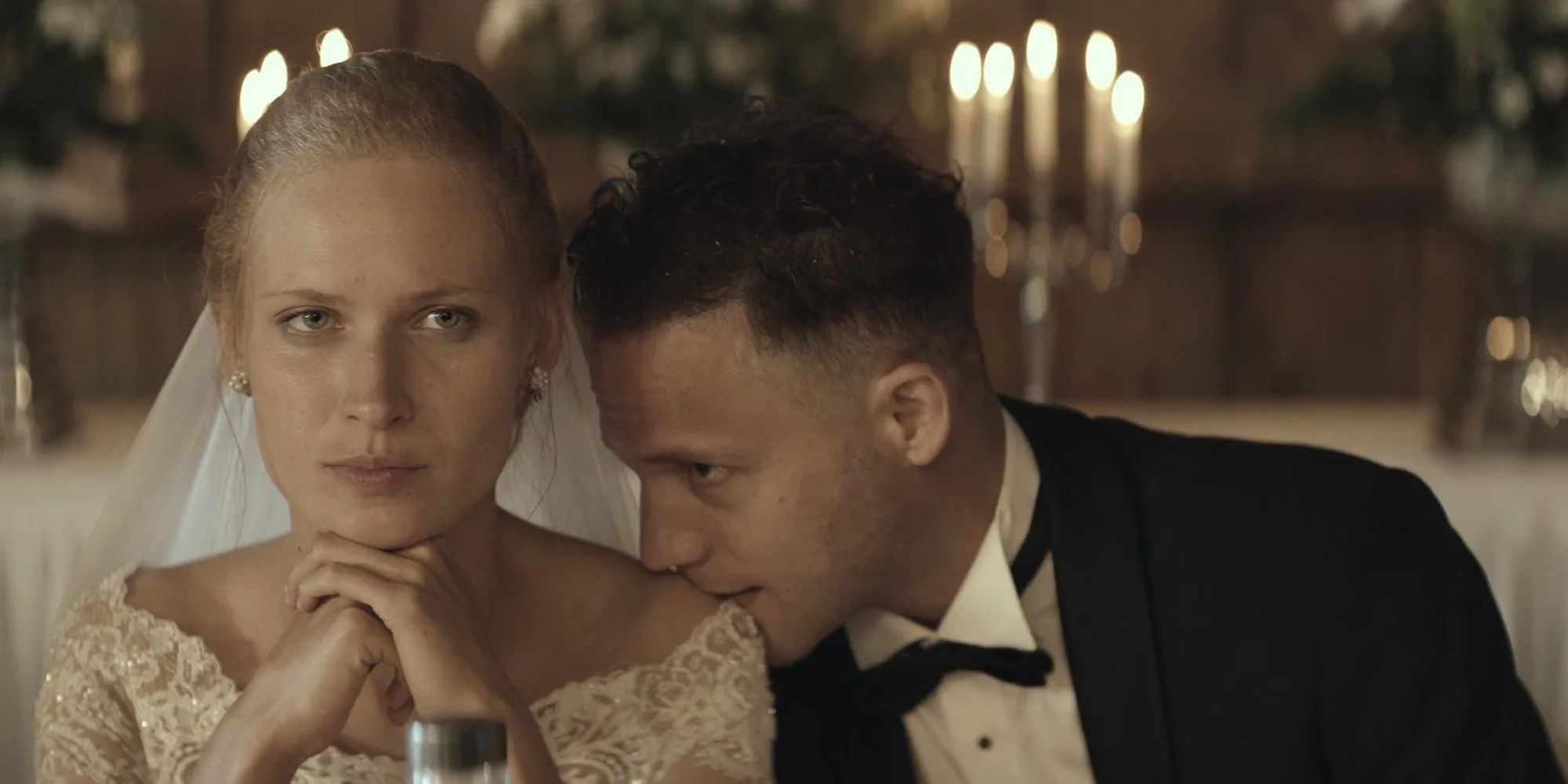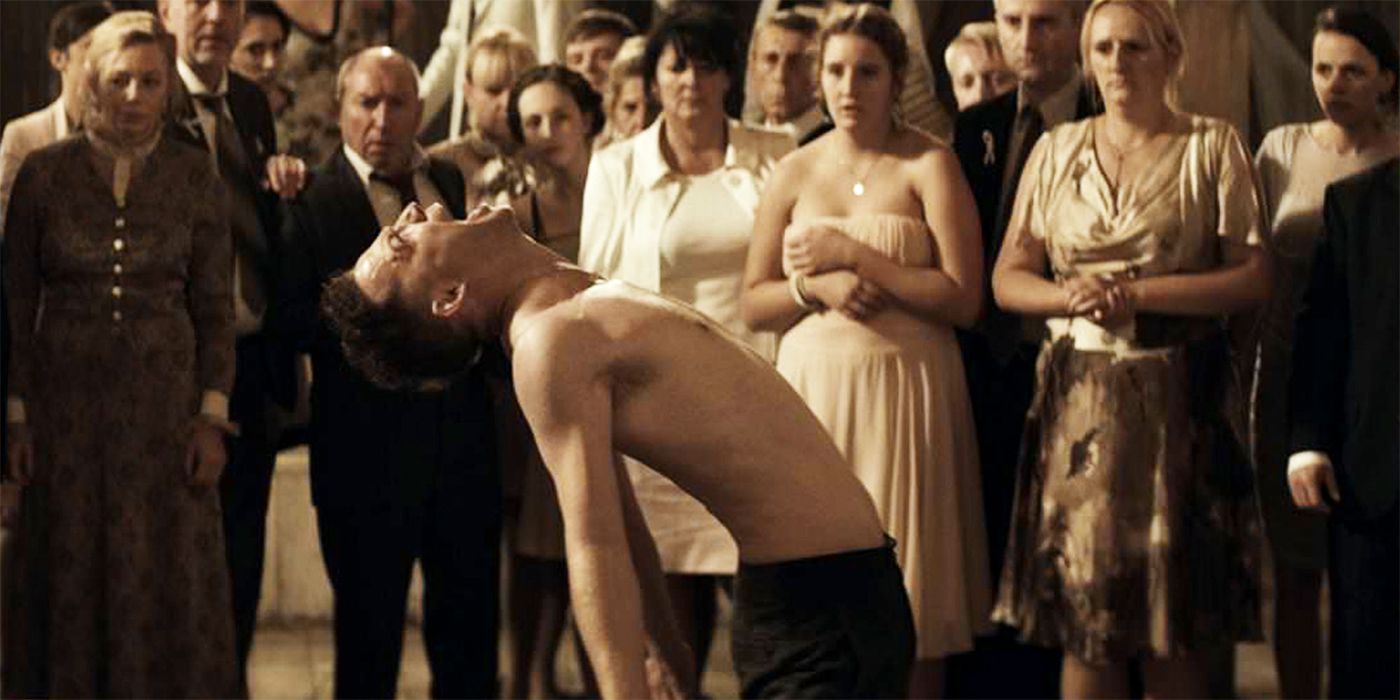While folklore has a whimsical nature that has long been harvested for children’s stories, it’s also been translated into some of the darkest horror films of all time. Hollywood has long been fond of the grim-dark fairytale and the latest trend with these retellings has been playing with non-Christian mythology and texts. Since the early 2010s, there has been a noticeable uptick in horror movies focusing on Jewish folklore surrounding ghosts and possessions. Films like David S. Goyer’s 2009 The Unborn and Ole Bornedal’s 2012 The Possession all deal with the Jewish legend of the dybbuk. Dybbuks are malicious spirits that possess the living and in Marcin Wrona’s final project, 2015’s Demon, dybbuks are used to prod at the post-war period in Poland.
Marcin Wrona Creates a Dread-Inducing Atmosphere in ‘Demon’
Framed as a psychological slow-burn, Demon follows Piotr (Itay Tiran) as he meets his bride-to-be, Zaneta (Agnieszka Żaneta). The couple is gifted an estate by Zaneta’s family, and on the land, Piotr finds a human skeleton that he is quick to rebury. The skeleton is not forgotten, however, as soon after, Piotr is tormented by hallucinations of a bride, Hana, and suffers fits. Wrona effortlessly weaves folklore throughout his film to build a tense tone and an oppressive feeling of doom.
Wrona’s aesthetic choices for Demon convey a sense of overwhelming dread. There is an air of claustrophobia once Piotr arrives at the estate. Piotr is trapped there with people who care more about appearances than his well-being — and so is the audience. The cool color palette with the warm yellows stripped out and the “old world” country setting winks at the bleak twist on the folklore. Once the movie transitions into the wedding, the camera shots become wild, with lots of spinning to mimic the frenzied, manic atmosphere. Using these stylistic framing devices allows Wrona to trap the audience in the same helplessness Piotr is experiencing.
‘Demon’ Interrogates a Post-World War II Poland
Demon’s setting and characters are all intentionally designed to comment on Poland’s continued minimizing of its role in the Holocaust during World War II. Despite upwards of 3 million Jewish Poles dying during the war, the government has long sought to downplay or outright deny the impact of the Holocaust in Poland. Wrona uses Demon to critique not only the government’s involvement in this denial but also the people’s willingness to accept the lie. Set on an isolated, country estate and following a moneyed family, Demon puts the privileged under the microscope. The film is critical of those willing to turn a blind eye to atrocities to maintain personal comfort. Piotr’s initial reaction to finding a human skeleton is to cover it back up and pretend he never saw it. Rather than fleeing Zaneta’s family, who are ultimately strangers and now potentially dangerous, he elects to stay. Marrying Zaneta promises Piotr status, something he values more than justice.

Related
If You Love ‘Pan’s Labyrinth,’ You Must See This Creepy Folk Horror on Shudder
Who knew fairies could make such great monsters?
For all that Demon is a possession movie, that is not where the film generates its horror. Zaneta’s family and the wedding guests’ selective blindness to the obvious suffering of Piotr is easily the scariest thing about Demon. Despite Piotr’s startling and visceral seizures and disturbing visions, what gets under the viewer’s skin is the response from all the living, non-possessed people. During one of Piotr’s episodes, he rips his shirt off. As he contorts, the camera focuses on the prominence of his spine and the layer of sweat covering him. When Piotr experiences a violent moment of possession during his wedding reception, the family is quick to get Piotr out of sight. As soon as he is away, the party can resume. This callousness is portrayed as horrifying, as Piotr’s continued agony even while sequestered is sharply contrasted with the lively party outside.
How Marcin Wrona Uses Jewish Folklore to Elevate His Horror
Dybbuk is an entity unique to Jewish folklore. They are half ghost, haunting the living and tormenting them, and half demon, possessing the living. Dybbuk are forces of justice, targeting only those who have sinned. During the dybbuk’s haunting and possession, they force the living person to acknowledge the wrong they have done. Choosing the dybbuk for this film was inspired. One of the final lines, “We must forget what we didn’t see here,” makes Wrona’s intention obvious. Wrona can draw parallels between his plot, where the characters willfully ignore the suffering and abuse of others and the history of anti-Semitism in Poland. Horror has long been used as an effective tool for criticizing social and political movements, and Demon highlights the ugliness of complacency in the face of atrocity.
While on the promotional circuit for Demon, Marcin Wrona died by suicide. His commitment to handling dark and pressing topics in his movies has resulted in a timely and shrewd catalog. Demon is his most ambitious project; a swan song that weaves terrifying elements of Jewish folklore into a commentary on Poland’s history of Holocaust denial. It’s a haunting film and one that will break the audience’s heart as it rips it out.
Demon is available to rent on Amazon.
Rent on Amazon



